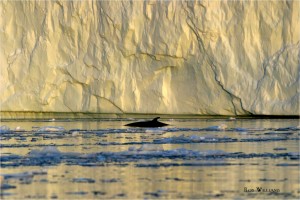
Few marine conservation issues are more contentious than Japan’s “scientific whaling” program, which allows for the killing of up to 935 whales each year. This number is large, relative to hunts of other whales in other parts of the world, but small relative to the hundreds of thousands of Antarctic minke whales in the population.
To many conservation scientists, though, it’s not the absolute number of whales in the population that matters — what we care about is whether the population is going up or down. And we’ve known for more than a decade that the Antarctic minke whale population appears to be declining.
That’s bad. But if the whales’ sea ice habitat is being affected by global climate change, its long term trajectory may be even worse. That would make Antarctic minke whales an icon of climate change — a Southern Ocean counterpart to the polar bear in the Arctic. One problem: Antarctic minke whales are even more difficult to count than polar bears.
That’s the context in which we partnered with the German and Dutch Antarctic programs, with input from British, American and Australian scientists. We conducted the first icebreaker-supported helicopter surveys in open water and adjacent ice-covered waters along the edge of the sea ice in the Weddell Sea. Our study found that there is a high density band of whales just along the ice edge, where ship surveys are confounded by fickle navigational safety issues. That region is home to high concentrations of the whales’ favourite food, krill. That region is being affected by climate change in different ways in different regions of the Southern Ocean. And maddeningly, just as we are beginning to understand the threat, changing ice conditions may be changing the surveys we use to monitor the health of the whales’ population. Depending on the ice conditions on a given day, a ship may or may not be able to access this high density region. And that affects our ability to tell if the population is going up or down.
Australia is suing to end Japan’s special permit whaling. The International Court of Justice will announce its decision tomorrow. Regardless of that decision, our research shows that if we really want to know how this population is being affected by climate change, we need bigger and much more expensive surveys than ever before.
